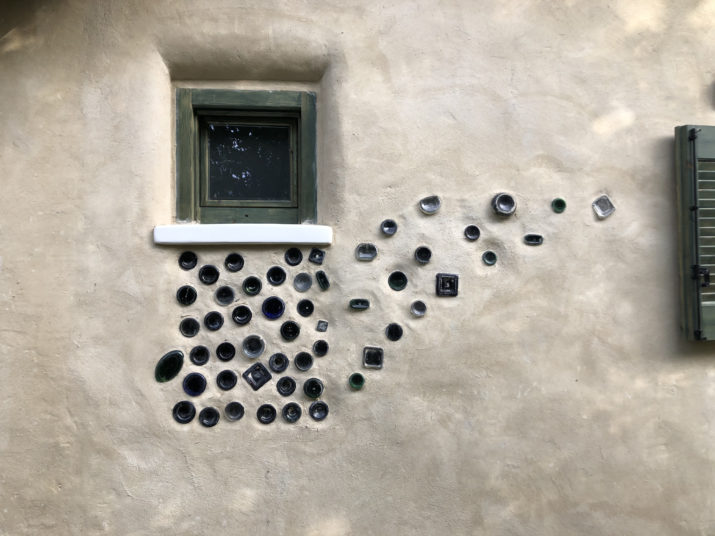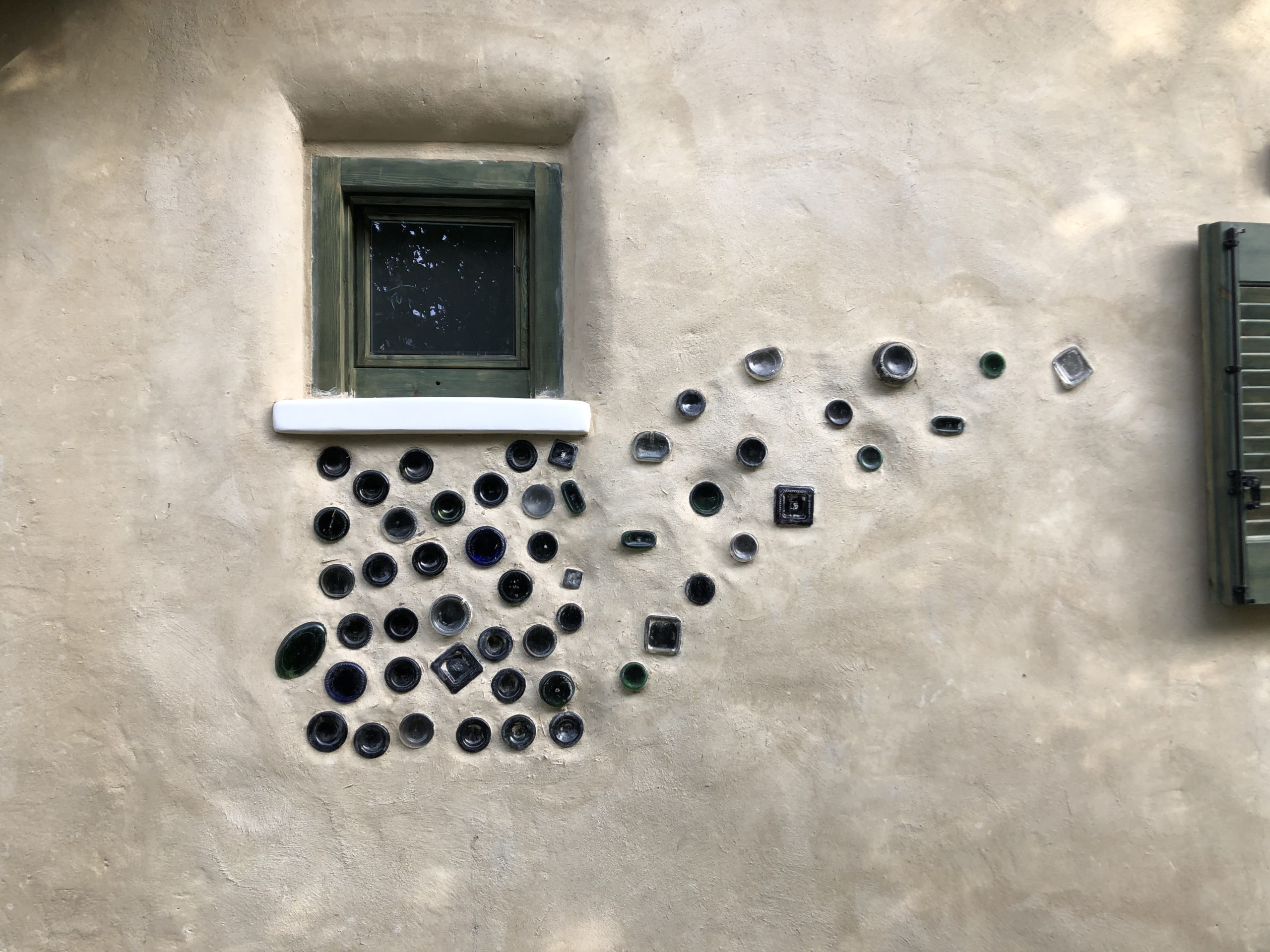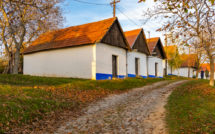

This is part of our special feature on Rurality in Europe, and a roundtable, Changing Agriculture in Rural Europe.
I could not have anticipated my boots being layered with dirt for much of my eighteen months of PhD dissertation research. My initial project explored how young adults in Athens, Greece, navigated a precarious job market. What did 60 percent unemployment look like and what strategies did young people adopt in order to fully integrate into society during the peak of debt crisis? [1] During preliminary research in Athens, I accepted an invitation from a friend to visit the permaculture farm and community she was co-managing on a mountain in the Peloponnese. I was astounded by the project, by its ambitious goals and vast network, and changed the course of my research. Permaculture is a design science and practice grounded in the understanding that viable economic and social orders must be interrelated with functioning ecological systems (Holmgren 2002). Social scientists have begun to take on the rising prevalence of permaculture to understand the ways communities deal with scarcity (Taylor Aiken 2017; Brawner 2015; Lockyer and Veteto 2013). Furthermore, this design framework has been adopted by the Transition Town movements, the Global Eco-Village network, as well as less formal networks of regenerative projects around the world.[2]
That particular permaculture project began ten years ago when a mechanical engineer and professional in marketing quit their jobs and refocused their labor on transforming an abandoned pear orchard into a mountain retreat center. Inspired by their friends’ endeavors in biodynamic agriculture and permaculture, they began to slowly integrate these principles into the design of their space. After years of work with friends and volunteers, an “Eco-Culture” center emerged. They had not anticipated such an extensive project from the start. The project’s private and commensal natural buildings, consisting mostly of cob, are surrounded by rich gardens producing herbs, vegetables, and fruits. Aside from being aesthetically impressive, the infrastructure functions to support an interconnectivity of community and more-than-human life through composting and other strategies to harness the different qualities of energy and materials on the site. The project awakened human activity and shared learning, and it revived a village that was in many respects abandoned before its arrival. Not only has the site attracted visitors from around the world, but it has also drawn friends and acquaintances to the same region to begin connected projects.
During my fieldwork, I encountered at least a dozen similar projects around Greece ranging from private farms, community projects, businesses, and NGOs. Their shared network led me to Athens and its outskirts, Evia, and around the Peloponnese. Drawing upon available resources, including natural materials and both familial and communal wealth, these groups are imagining, implementing, and living with designs that foreground abundance over scarcity, and symbiosis and collective vitality with existing and newfound kin—with one another and with the “natural” environment. Driving these movements is the concept of “regenerative design.” In Greek, αναγέννηση (regeneration) connotes a regrowth or a bringing back to life. At its core, regenerative design espouses the notion that depleted soil can be enrichened and revitalized, and that broken or extractive systems can be integrated and transformed into ones that are life serving. Through their redesign of housing (such as natural and bioclimactic building), production (such as locally grown, pesticide-free produce, and energy harnessing) and exchange practices (such as time banks and labor share), the communities explored in this ethnographic work provide examples of “possible futures” and economic diversity that exist now.
On a cloudy morning in November 2019, I made my way to a neighboring permaculture farm. I had come prepared to help apply plaster to an outside “hangout” area and during breaks sit down to conduct interviews with Cali and Aris, the couple who started the project: a few hours of talk in exchange for an extra set of hands to provide the communal labor that is vital to these sorts of grassroots projects working with the land. After the twenty-minute walk to their farm, I arrived to find Cali and Aris processing the manure of a gray stallion who had been adopted by a common friend from the shepherd in the village. I had been caring for this stallion while our friend was out of town. This meant feeding him hay and clover three times per day, and shoveling his manure from the paddy to a pile closer to the road. Cali and Aris had been coming by every few days to load the material into the back of their station wagon. Now the manure was on their land and they were processing it with the help of their resident volunteer. “What are you going to do with all of that poop?” I asked. Referring to my horse-sitting, they laughed and replied that all of my efforts had been put to good use. “This is great stuff,” continued Aris. It is fantastic fertilizer for the soil and great binder for the plaster. I joined the group under the semicircle hangout area that we had scheduled to work on that morning. With slight hesitation I grabbed a few round pieces of manure, which consisted mostly of clover, and broke them up with a crumbling motion of my hands into a bucket that would later be added to the plaster mix.
The scene reminded me of my first visit to the space two years earlier. I had sat outside of Cali and Aris’s small cob house speaking to the volunteers around a table while we cut up strawberries in preparation for a marmalade. This shared activity points to patterns I observed during my ethnographic work. For instance, the socializing and shared labor that often go hand in hand when there is so much work at hand. Indeed, Cali and Aris, along with friends and volunteers, have done a lot of work. The infrastructures and gardens have proliferated during their eight years on the land. The hangout was the newest addition to a regenerative infrastructure that supports cohabitation with the land as well as income-driving activities like vegetable production and the creation of herbal tinctures and salves. They have constructed a cob kitchen, an herb-drying station, and wood shed. The cob chicken house, reinforced with recycled glass bottles, houses over forty chickens that produce enough eggs to supply their neighbors. The processing of manure, however off putting it may be as it juxtaposes the cutting up of fresh strawberries, is vital to understanding a regenerative design system.
A co-founder of my main field site describes permaculture as an embodied sensibility rather than something that can simply be taught. He explains that natural building, for instance, entails thoughtfulness for how the materials and designs of a structure will impact the environment as well as those who will inhabit it. “We have to think about the materials we use from cradle to grave,” he says. Regenerative design projects harness the energy around them that they recognize within different forms of life. Part of this process entails reallocating materials, turning them from “waste” into life-giving substances. Joshua Reno (2016, 8) has written that “cleanliness is made possible because of all [waste] that is inconspicuously absent and landfilled elsewhere.” While waste, particularly trash collection, continues to be an issue in this region, the projects included here engage in practices to reintegrate as many materials as possible back into the cycle of energy flows that fuel daily life, recoding them as living and productive. They consider that even the waste disposal of these materials index complex social relationships and unseen impacts on human and nonhuman environments. Thus, the same logic underlying the design of greywater or food compost systems, embracing elements as integral to our social ecologies, also comes into play with human and animal bodily “waste.” Across my field sites, infrastructures are being designed to facilitate a flow of organic compost (e.g. food scraps) to animals like chickens and pigs who break down the material and fertilize the land on which they reside. Compost and straw bale urine toilets turn human by-products into fertilizer, turning waste into nutrient-rich life-giving material.
Recognizing the embodied and leaky (Haraway 1991) energy of inconspicuous life forms is integral to the practice of regenerative design. This work involves a “micropolitics” (Bennett 2010) that attends to the complex web of publics that consist of both human and nonhuman actants in a design field. Jane Bennett (2010) explains how thinking through the dynamic agency of all matter is a philosophical exercise that has important political implications. Defining politics as a “political ecology,” she describes entanglements like the ways fatty acids and omega three that we eat alter our moods. Recognizing such a distributed agency, she explains, can spur “cultivation of a more responsible, ecologically sound politics.” This politics of recognition can be activated at multiple scales.
Using the example of the persistent matsutake mushroom and the economies its life biographies index, Anna Tsing (2015) calls for attending to the various forms of life that persist through the cracks and ruins of capitalism. Tsing acknowledges that scholars have dichotomized the idea of an all-encompassing capitalist economic structure against its alternatives for the sake of leveling critique. But she asks, why instead not hope for and analytically explore economic diversity (Tsing 2014)? In order to do so, we must turn our attention to the places where this diversity exists. Regenerative design initiatives in Greece serve as a springboard for such analysis. I propose that the network of aspiring communities explored here, serve as ethnographic evidence for such academic and more importantly, worldmaking, projects. To account for their experiences and efforts is to recognize, attend to, and perhaps give validity to diverse economic expressions—and to make economic diversity more credible (Gibson and Graham 2008). The evidence lies partially in the exchange relationships individuals and groups choose to engage in, as well as with what and whom entities are open to actively collaborate. This politics of recognition allows for a broadened aesthetic of economy and exchange, locating even small corners of abundance through regeneration in contexts otherwise defined by scarcity.
Evy Vourlides is a PhD Candidate in Anthropology at the George Washington University.
References:
Bennett, Jane. 2010. Vibrant Matter: A Political Ecology of Things. Durham: Duke University Press.
Brawner, June. 2015. “Permaculture in the Margins: Realizing Central European Regeneration.” Journal of Political Ecology 22:429-444.
Dalakoglou, Dimitris and Georgios Agelopoulos, ed. 2018. Critical Times in Greece: Anthropological Engagements with the Crisis. London: Routledge.
Doxiadis, Evdoxios and Aimee Placas, eds. 2018. Living Under Austerity: Greek Society in Crisis. New York: Berghahn Books.
Gibson-Graham, J.K. 2008. “Diverse Economies: Performative Practices for ‘Other Worlds,’” Progress in Human Geography 32(5):613-632.
Haraway, Donna. 1991. “A Cyborg Manifesto: Science, Technology, and Socialist-Feminism in the Late Twentieth Century,” In Simians, Cyborgs and Women: The Reinvention of Nature, pp. 149-181. New York: Routledge.
Herzfeld, Michael. 2016. “The Hypocrisy of European Moralism: Greece and the Politics of Cultural Aggression–Part 1.” Anthropology Today 32: 10–12.
Knight, Daniel. 2017. History, Time, and Economic Crisis in Central Greece. New York: Palgrave MacMillan.
Lockyer Joshua and James R.Veteto, eds. 2013. Environmental Anthropology Engaging Ecotopia:Bioregionalism, Permaculture, and Ecovillages. New York: Berghahn.
Papailias, Penelope, ed. 2011 Beyond the ‘Greek Crisis’: Histories, Rhetorics, Politics. Hot Spots series, Fieldsights, October 10. https://culanth.org/fieldsights/series/beyond-the-greek-crisis-histories-rhetorics-politics
Reno, Joshua. 2016. Waste Away: Working and Living with a North American Landfill. Oakland: University of California Press.
Tsing, Anna L. 2014. “Strathern Beyond the Human: Testimony of a Spore,” Theory, Culture & Society 32(2/3):221-241.
___________. 2015. The Mushroom at the End of the World: On the Possibility of Life in Capitalist Ruins. Princeton: Princeton University Press.
[1] The Greek debt crisis and subsequent economic restructuring (austerity measures) implemented by the European Central Bank, European Commission, and the International Monetary Fund–the infamous Troika—has been well documented. See Dalakoglou and Agelopoulos, eds. 2018, Doxiadis and Placas, eds. 2018, Papailias ed. 2011, Knight 2017, Herzfeld 2016, among others.
[2] See https://transitionnetwork.org/ and https://ecovillage.org/
Published on November 10, 2020.




